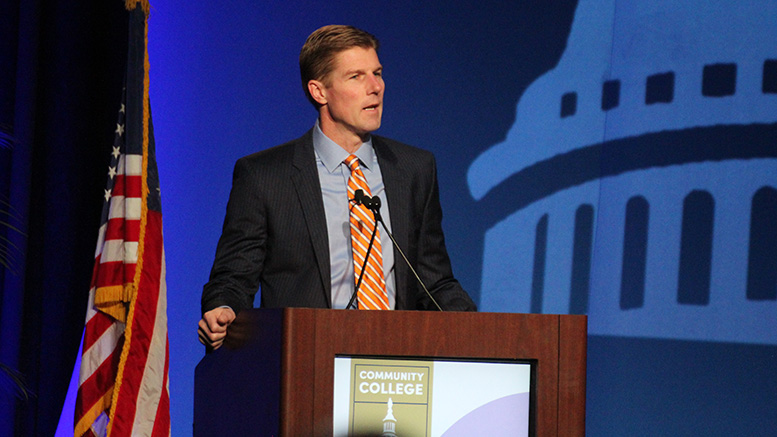The Trump administration wants not only to see federal agencies work together to streamline their various job training programs but also to better coordinate and collaborate on services designed to help individuals overcome barriers, such as housing, hunger, childcare and mental health.
That was a key message on Monday from John Pallasch, assistant secretary for employment and training at the U.S. Department of Labor (DOL), who spoke at the 2020 Community College National Legislative Summit in Washington, D.C. The annual event is sponsored by the Association of Community College Trustees in collaboration with the American Association of Community Colleges.
Pallasch echoed a well-stressed point among education and job training officials that federal agencies must better align their job training programs, noting that it is frustrating for state and local officials when a federal agency issues guidance that is confusing or contradictory. He also encouraged local officials to take the lead on creating innovative workforce solutions, adding that the federal government’s role is to provide resources, facilitate relationships and “get out of the way.”
A comprehensive approach
Pallasch noted that previous administrations have tried to streamline job training programs but have fallen short. He also emphasized that it’s not just about streamlining job training programs; it’s about providing coordinated services to people to help them overcome barriers, which range from challenges with transportation to childcare.
One-quarter of individuals who get jobs through job training programs leave those jobs within six months, Pallasch said. That means that barriers to their success remain, he said.
Many of the same federal partners — the departments of labor, education, health and human service, veterans affairs, defense, transportation, housing and urban development — that work together on job training issues can help address those barriers and find ways to eliminate them, Pallasch said.
“Now is the time to make real systemic changes,” he said.
Training incumbent workers
Part of that also includes upgrading the skills of incumbent workers. The federal government has to better advocate for employers to tap federal resources to ensure their employees have the skills for a rapidly changing workplace. Too often, the government waits until employers start laying off employees before it offers job training assistance, Pallasch said.
“We have to be much more aggressive in that outreach and marketing,” he said.
Pallasch emphasized the role that community colleges play in workforce development, which keeps the economy humming.
“The only thing that’s going to slow the economy down is a lack of workers,” he said.
As community college leaders gathered in Washington for discussions and advocacy on legislative issues, the National Governors Association also was holding its winter meeting in town. Pallasch noted that Labor Secretary Eugene Scalia would likely ask the state leaders how community colleges fit into their plans for workforce and economic development and other issues.
Still a stigma around apprenticeships
Apprenticeships continue to carry a stigma in the U.S. despite having a proven track record leading to good-paying jobs, Pallasch said. He noted that 94 percent of apprentices are hired by the employers that provided their apprenticeship, and they earn, on average, $70,000 in their first year after their apprenticeship.
“That’s significantly better than the Department of Labor’s job training programs,” Pallasch said.
The administration is pushing the value of apprenticeships and wants to broaden the industry sectors that use them, including health care, energy and cybersecurity. However, Pallasch said that 65 percent of apprenticeships in the U.S. remain in construction, and most of those apprentices are white males.
A new website with data
DOL this year plans to launch a new website that will publish data to help workers assess job training providers, Pallasch said. The site will include information such as placement rates, awarded credentials and earnings.
“If individuals are not getting good-paying jobs, that will show up in the data,” he said.

